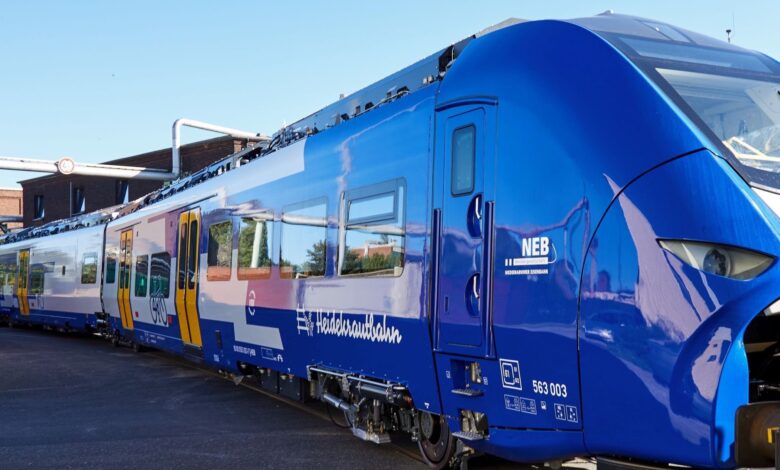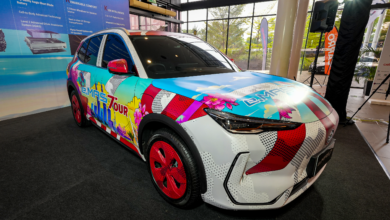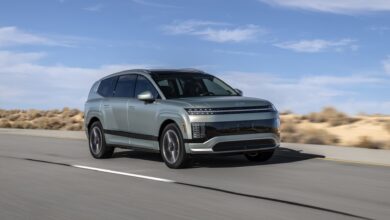More Diesel-Killing Hydrogen Electric Fuel Cell Trains Are Coming

Sign up for daily news updates from CleanTechnica on email. Or follow us on Google News!
Electric commuter trains and subways are a dime a dozen in some parts of the world, but long haul passenger and freight trains still depend on diesel fuel. That’s why ears pricked up last year when Germany introduced the world’s first rail line to feature only zero emission hydrogen fuel cell electric trains. Apparently that experiment was a bust, but Germany is back again for another crack at it.
Hydrogen Fuel Cell Electric Trains Get Knocked Down…
Electric commuter trains, trolleys, and subways typically get their electricity from overhead wires or electrified rails that run the entire length of the railroad. Installing on-board batteries or fuel cells to electrify trains is a new thing.
If you’re wondering why not just retrofit all the non-electric rail lines with new wires or rails, that’s a good question. Though it’s possible in some cases, generally speaking a systemwide electrification retrofit would be impractical or prohibitively expensive, especially when new substations, transmission lines and other electric infrastructure are factored in.
Early signs of interest in deploying fuel cells to decarbonize locomotives began to cross the CleanTechnica radar several years ago. The going was slow, but last year Germany’s state-owned rail company, Landesnahverkehrsgesellschaft Niedersachsen (LNVG), made a splash when it launched the world’s first rail line to run fuel cell electric trains exclusively.
That was cause for much celebration among fans of fuel cell electric trains. Unfortunately for them, the party did not last long. In August of 2023, multiple news organizations reported that LNVG is planning to acquire 102 battery-electric trains, having determined that the fuel cell route to decarbonization was too expensive.
…But they get up again.
So much for fuel cell electric trains, at least as far as LNVG is concerned.
Meanwhile, in September the Siemens Mobility branch of the global powerhouse Siemens announced that the first round of testing for its new Mireo Plus H hydrogen train has been completed.
The project is supported by the state of Bavaria through the railway operator Bayerische Regiobahn (BRB), which bills itself as the second-largest railway system in Germany.
If all goes according to plan, the new fuel cell electric trains will begin ferrying passengers between Augsburg, Füssen, and Peissenberg sometime next summer for a 30-month trial run.
Mireo Plus H represents a different approach to railway electrification. Instead of having locomotives pull a long train of cars, the new fuel cell electric trains come in pairs called trainsets.
“Two roof-mounted fuel cells and a lithium-ion battery ensure completely CO2-free mobility,” Siemens explained in a press statement. The new electric trains can operate from 1,000-1,200 kilometers between refueling, reaching a top speed of 160 kilometers per hour.
“The Mireo Plus H also impressively features the lowest lifecycle costs compared to other fuel cell trains on the market and can be quickly refueled in just 15 minutes,” Siemen added.
Bavaria’s Transport Minister, Christian Bernreiter, seemed somewhat reassured but is hedging his bets for now. “Our goal is to end diesel operations in Bavaria’s local and regional rail passenger transport by 2040. In addition to electrifying routes and using battery-powered trains, hydrogen propulsion can be an important factor in achieving this goal,” he said.
The state’s Economics Minister was more enthusiastic. “With this first hydrogen train, Bavaria is taking another step towards a hydrogen future,” said Hubert Aiwanger, adding that “we are making the hydrogen future a tangible experience.”
Aiwanger also noted that the Mireo Plus trial run would serve as a learning platform towards “the broad application of sustainable hydrogen innovations.”
Siemens is already eyeballing additional orders. On December 11 the company announced that it has built seven Mireo Plus H trainsets for Niederbarnimer Eisenbahn (NEB), to run in the Berlin-Brandenburg region.
Green Hydrogen For Fuel Cell Electric Trains
As for the source of the hydrogen to fuel all those new electric trains, the global hydrogen supply currently relies almost exclusively on natural gas and other fossil inputs. However, new green hydrogen technology is beginning to replace fossils with electrolysis systems powered by renewable energy, which push hydrogen gas from water.
Biomass and wastewater are also in play for a sustainable hydrogen supply chain, but for now much of the action is centered on water electrolysis (lots more green hydrogen coverage is here).
As of right now, green hydrogen accounts for a negligible amount of the global hydrogen supply, down in the 1% range according to some estimates. However, the green hydrogen transition is accelerating, with an assist from Germany among other nations.
That includes India, which has laid ambitious green hydrogen plans. “The Ministry of New and Renewable Energy has articulated a national green hydrogen mission, with the goal of making India ‘the Global Hub for production, usage and export of Green Hydrogen and its derivatives,’ CleanTechnica noted in November.
India is already planning for green hydrogen to go with its new fuel cell electric bus pilot test, and it is not leaving fuel cell electrc trains out in the cold.
On December 11, the global green hydrogen firm GreenH Electrolysis announced that it will construct a green hydrogen production facility with a fueling station, custom-built to help kickstart the “Hydrogen for Heritage” initiative of Indian Railways.
“Indian Railways (IR) has envisaged to run 35 (thirty five) Hydrogen trains under “Hydrogen for Heritage” at an estimated cost of ₹ 80 crores per train and ground infrastructure of ₹ 70 crores per route on various heritage/hill routes,” the Ministry of Railways explained last February. The timetable calls for the first trains to run between Jind and Sonipat beginning in 2024.
The news organization Railway Technology notes that the Heritage routes are narrow-guage railways including Matheran Hill Railway, Kangra Valley, Bilmora Waghai, Marwar-Devgarh Madriya, Nilgiri Mountain Railway, Kalka Shimla Railway, and Darjeeling Himalayan Railway.
The Ministry of Railways expects that initial running costs will be high, but that costs will go down as more fuel cell electric trains hit the rails and economies of scale go up. They also refer to hydrogen fuel cell trainsets for the Heritage project, which could mean that trainsets are making a contribution to the economic feasibility of fuel cell propulsion.
The Ministry also notes that it has launched a fuel cell electric train retrofit pilot project using a diesel-electric multiple unit train as a platform, aimed at the Jind–Sonipat section of Northern Railway. The project will be supported by GreenH’s new green hydrogen and fuel station facility.
Speaking Of Trainsets…
If you know anything about the advantages of deploying trainsets for railway electrification, drop us a note in the comment thread.
Hydrogen trainsets are also coming to the USA, where California called dibs on the country’s first ever fuel cell electric trainsets back in 2019, to be supplied by the US branch of the Swiss company Stadler. The flexibility to run on tracks with or without overhead wires was apparently part of the calculation.
In October, Stadler signed an agreement with California transportation officials to deliver four hydrogen trainsets.
“That may sound like small potatoes, but if all goes according to plan the agreement comes with an option to purchase 25 more fuel cell trains,” CleanTechnica noted.
Follow me @tinamcasey on Bluesky, Threads, Post, and LinkedIn.
Photo (cropped): Siemens Mobility is producing hydrogen fuel cell electric trains for Germany (courtesy of Siemens).
Have a tip for CleanTechnica? Want to advertise? Want to suggest a guest for our CleanTech Talk podcast? Contact us here.
Our Latest EVObsession Video
https://www.youtube.com/watch?v=videoseries
I don’t like paywalls. You don’t like paywalls. Who likes paywalls? Here at CleanTechnica, we implemented a limited paywall for a while, but it always felt wrong — and it was always tough to decide what we should put behind there. In theory, your most exclusive and best content goes behind a paywall. But then fewer people read it!! So, we’ve decided to completely nix paywalls here at CleanTechnica. But…
Thank you!
CleanTechnica uses affiliate links. See our policy here.






